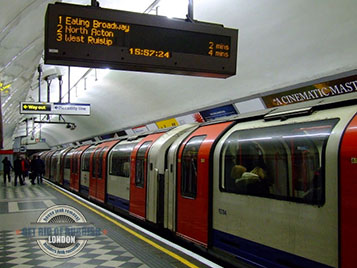The New Year did not begin only with huge amounts of rubbish removals for London’s companies and households after the holidays. The BBC reported that on 2 January passengers on the capital’s largest public transport network travelled for free for several hours due to a glitch in the software that is responsible for reading their Oyster cards.
The card readers, that are to be found on every Tube station and bus malfunctioned and it was impossible to check in with the Oyster card. Now, one can think such a thing can cause a lot of drama, but the Transport for London (TFL) showed that they know when a problem is their fault, because the company’s staff waved passengers through the barriers, thus enabling them to use the public transport they need for free. Thus, the glitch did not prevent any resident or visitor of London who is in possession of an Oyster Card to use the Tube, bus or rail network.
 The problem, according to official information released by TFL to the public, began at 04:30 GMT and since then has been resolved successfully.
The problem, according to official information released by TFL to the public, began at 04:30 GMT and since then has been resolved successfully.
The readers were unable to deduct the correct fare from the pre-paid Oyster cards, thus making it possible for those passengers who have one of those to travel for free in the period when the problem was present. On the other hand, the season ticket Oyster Card users were not affected by the issue, because this type of pre-paid cards do not require payment for every single travel conducted.
The problem was solved relatively quickly, especially bearing in mind its scale, and now the normal operation of the Oyster Card readers has been resumed.
The London Underground began operation on 10 January 1863. The proposition for building an underground railway system to service the needs of people living in and visiting the capital was originally made in the 1830s and the company named Metropolitan Railway was given a permission to start building the system in 1854. The so called Deep Level Tubes, a system of tunnels that run at a greater depth were expanded and improved in the period between 1900 and 1908. The problem with smoke filling the tunnels and carriages due to the type of locomotives that had been used was fixed by the thorough electrification of the underground trains in the very beginning of the 20th century. As of today, the system has as many as 270 stops and covers a 250 miles route thus rendering literally every point in the London Metropolitan area easily accessible and at a price. Most of the stations are located however on the northern bank of the Thames. Another rather interesting fact is that despite the name of the system, only the humble 45 percent of all tunnels actually run underground today – the name is most preserved for historical reasons and to distinguish the system from the Overground railway, which is another commonly used means of transportation for people who want to quickly reach various points in the capital.
